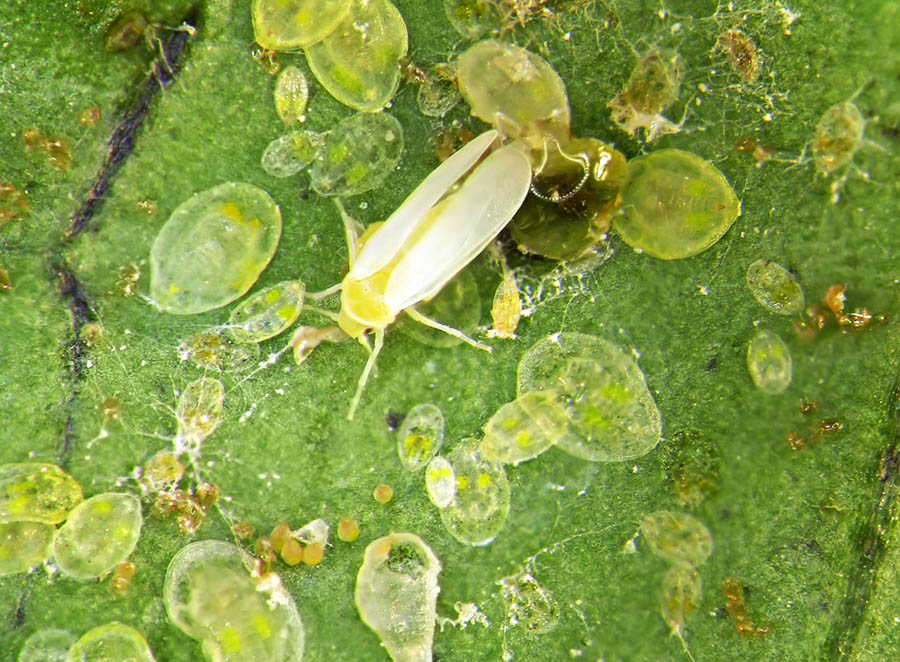Whiteflies in the California Home Garden, Part 1 of 3: Introduction

This is the first in a series of three articles discussing whiteflies in the California home garden.
Whiteflies are a contender for most-pervasive, most-persistent insect pest in gardens throughout California. The worst infestations usually occur in disturbed landscapes that lack predatory insects, and on stressed or over-fertilized plants and trees, during warm-to-hot weather.
At least 1500 species of whiteflies have been identified, but a few common pest species cause most damage in gardens and landscapes. It’s not usually necessary to identify exact whitefly species for early and small garden infestations, or when applying manual and nontoxic control methods, which are the same for all species. See Whiteflies in the California Home Garden, Part 3 of 3: Treatment and Control.
Despite being called “flies” and flying like tiny moths, whiteflies are properly neither. They are Hemipterans, related to aphids, scale, and other sucking insects. Adults are tiny flying insects that typically cause little direct damage to plants, but may spread plant diseases, such as in strawberries. Plant diseases from whiteflies are generally of much greater concern to commercial and large-scale farmers than home gardeners.
The photo above shows whiteflies magnified at three stages of development: adult (winged insect in large circle with black arrow), eggs (tiny spheres in oval at lower left with brown arrow), and nymphs (numerous flat ovals two of which are in circle at lower right with orange arrow). The nymphs, or immature whiteflies, cause the majority of direct damage. Once past the first nymphal stage when they are mobile and too small to see, whitefly nymphs become immobile. In severe infestations they may cover undersides of leaves, and may be confused with scale insects.
Whiteflies damage leaves, causing curling, yellowing, and other distortion or discoloration; reduce yields; and encourage growth of unattractive sooty mold. They normally kill plants only in cases of severe and prolonged infestation, or when plants are already weakened or stressed.
Whitefly infestations appear so consistently during summers in Southern California inland areas, beginning after the first several weeks of hot weather, you can almost set your calendar by them. This window occurs most years between late July and mid-August, and may persist at least through fall or early winter.
In coastal areas, whiteflies may persist year-round, but are usually the most problematic during warm-to-hot weather. Whiteflies may persist or overwinter on trees, vegetables, and other plants in areas with mild winters, meaning areas with no frosts or occasional mild frosts.
GardenZeus has customized gardening information for your area. To get started, enter your zip code here.
Other articles of interest:
Whiteflies in the California Home Garden, Part 2 of 3: Prevention and Monitoring
Whiteflies in the California Home Garden, Part 3 of 3: Treatment and Control

